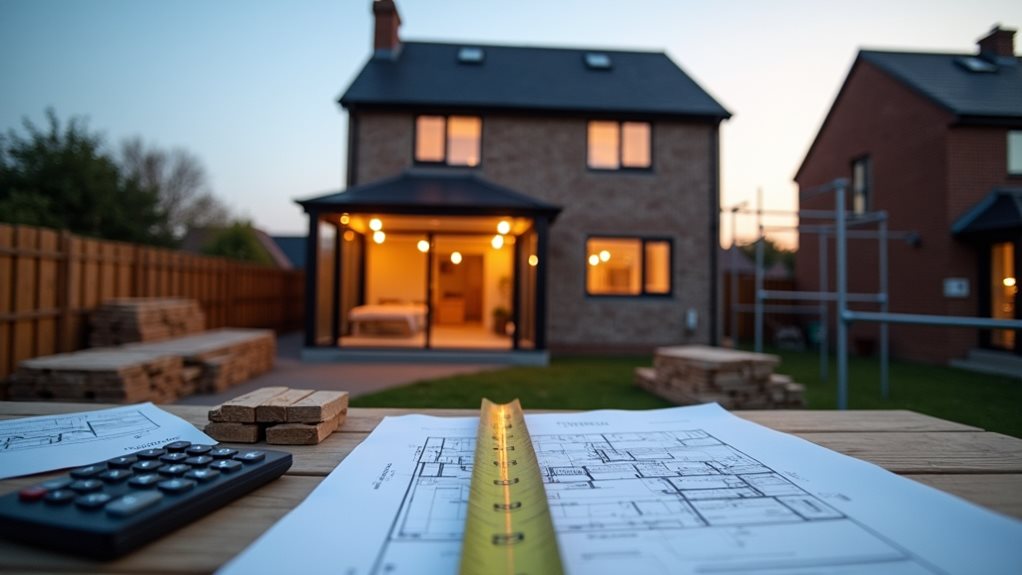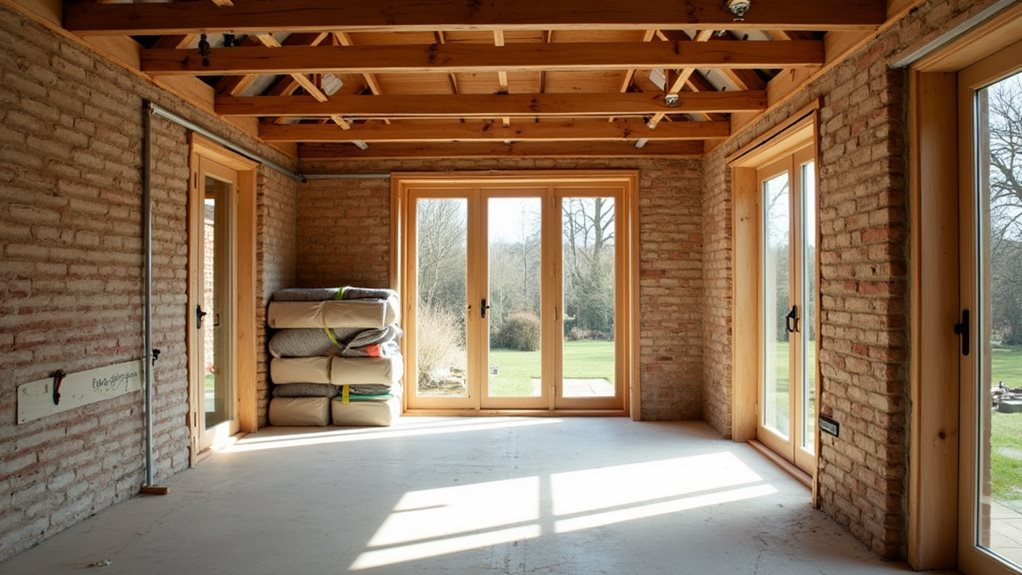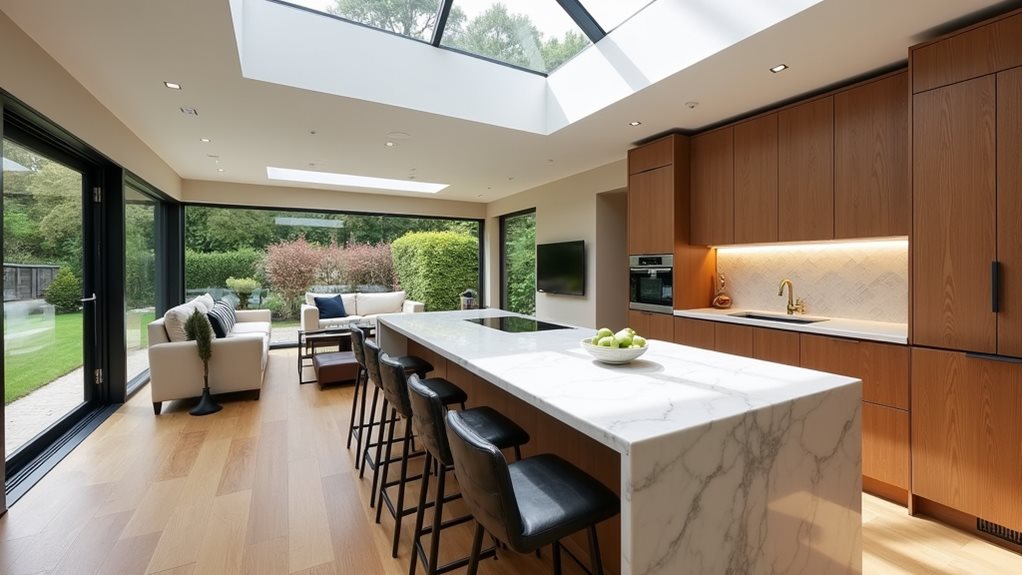Phone:
(701)814-6992
Physical address:
6296 Donnelly Plaza
Ratkeville, Bahamas.

How these five crucial factors can make or break your side extension budget might surprise you when planning your home expansion.
Your storey side extension's cost will be influenced by five critical factors: the scale and square footage (typically £2,000-£2,500 per m²), design complexity and architectural features, material selection and construction methods, site access logistics, and interior finish specifications. Each element carries its own financial implications, from basic structural choices to premium finishes. You'll need to carefully balance these components while considering both your immediate budget and long-term property value. Let's explore how each factor shapes your project's bottom line.

When planning a side extension, understanding the relationship between scale and cost serves as your essential first step.
You'll need to take into account that a typical single-storey extension costs between £2,000 and £2,500 per square metre, while your cost breakdown will vary based on the project's scope and complexity.
For space optimization, consider that a semi-detached house extension of 8m depth and 3m width provides 24 square meters per floor. This means that design and materials will play a crucial role in determining the final budget.
You're looking at £48,000 to £60,000 for a single-storey project of this size.
If you're contemplating a double-storey extension, you'll find that while the overall cost is higher, you'll actually save on the cost per square metre for the upper floor.
Foundation costs won't double either, making a two-storey extension potentially more cost-effective per square metre of added space.
Planning ahead for a side extension often requires obtaining planning permission fees of approximately £258 in England.
While a basic rectangular extension might seem straightforward, the complexity of your design choices greatly impacts the overall cost of your side extension project.
You'll find that integrated features like skylights, custom architectural elements, and non-standard shapes, while enhancing your design aesthetics, considerably increase both planning and construction costs.
When you're considering your extension's design, remember that more complex architectural features require specialized construction methods and additional expertise from structural engineers. Working with skilled architects can help optimize costs while maintaining design integrity.
Your roof choice also plays an essential role – pitched roofs typically cost more than flat alternatives, and you'll need to factor in long-term maintenance.
Don't forget that planning regulations and building compliance requirements become more demanding with complex designs, potentially adding to your overall expenses through additional permits and professional fees.

The selection of construction materials and methods for your side extension greatly influences both your immediate costs and long-term value.
While traditional brick and block construction averages £1,850 per m² for single-side extensions, you'll find it's particularly effective for matching your existing home's structure and maximizing material efficiency.
If you're looking to reduce labor costs and construction time, timber frame construction might be your best option.
It's typically more cost-effective than brick and block, though it's not ideal for terraced houses.
While SIPs and precast concrete panels offer modern alternatives with excellent energy efficiency, they'll require higher upfront investment.
Remember that each method comes with its own balance of initial costs versus long-term benefits, so you'll want to align your choice with both your budget and long-term property goals.
Beyond selecting materials, successful side extension projects depend heavily on site access and logistics planning.
You'll need to carefully evaluate your site layout, considering how construction vehicles will enter and exit, where materials can be safely stored, and how to maintain access to your property throughout the build.
Traffic management becomes essential when you're managing deliveries and coordinating construction activities.
You'll want to establish clear routes for vehicles, guarantee there's adequate space for equipment movement, and consider your neighbors' needs.
Setting up dedicated zones for material storage, parking, and waste disposal will help keep your project organized.
Don't forget to plan for weather protection and security measures – you'll need covered storage areas for materials and secure zones to prevent theft or damage during construction.

Selecting interior finishes and specifications for your side extension represents a significant portion of your overall budget, with choices ranging from basic materials to premium options that can dramatically impact the final cost.
Your finish selections, from flooring to custom cabinetry, will influence both functionality and expense. High-traffic areas like kitchens and bathrooms typically demand more investment due to specialized plumbing and electrical requirements.
When planning your interior layouts, you'll find that standard bedrooms cost less than utility spaces with specialized fittings.
You're likely to see higher costs with premium materials like granite countertops and custom joinery, while basic options such as laminate surfaces offer more budget-friendly alternatives.
Remember that built-in furniture, lighting fixtures, and additional electrical outlets will add to your overall expenses.
While the investment in your side extension might strain your resources a bit, you'll find that careful planning across these five areas will help you allocate your funds wisely. Remember, you're not just expanding your living space—you're creating a lasting enhancement to your property's value. By weighing each factor thoughtfully and working with experienced professionals, you'll be well-positioned to make informed decisions that balance your vision with your budget.